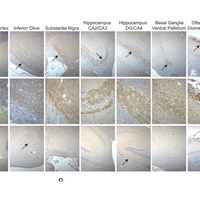reproducibility

Science Summarized: Smart Labs Connect Scientists, Instruments, and Data
The Scientist and MilliporeSigma | Jun 29, 2023 | 1 min read
Smart laboratory instruments are intuitively-designed ergonomic tools that support greater connectivity and productivity.

Relieving the Pipetting Toll for Better Results
The Scientist and BRANDTECH Scientific | Mar 13, 2023 | 3 min read
Scientists use an automated liquid handling station to ensure consistency across a range of experiments.

Real-Time PCR Tips and Tricks
Analytik Jena | Jan 19, 2023 | 1 min read
Strategies to overcome common qPCR challenges

Mice Fed a Highly Processed Diet Are More Susceptible to the Flu
Alejandra Manjarrez, PhD | Nov 18, 2022 | 3 min read
It’s not clear why grain-fed mice are better able to recover after infection, but a study’s findings suggest food type may skew the results of animal studies.

Living on the Edge
Baker | Aug 1, 2022 | 1 min read
How to maintain cell culture conditions to eliminate the edge effect in multiwell plates.

How to Eliminate Common Pipetting Errors
Avidien | Jun 13, 2022 | 1 min read
Learn about common pipetting errors and how to avoid them for more repeatable experimental results.

Automating NGS Library Prep
The Scientist and Eppendorf | Apr 12, 2022 | 3 min read
Liquid handlers specialized for next-generation sequencing (NGS) automate nucleic acid extraction and library preparation from microbiome samples.

No More Messy Notes: Modernizing the Lab Notebook
The Scientist and SciNote | Mar 25, 2022 | 2 min read
An electronic laboratory notebook (ELN) keeps data organized and secure, boosting productivity and reproducibility.

Study Finds Reproducibility Issues in High-Impact Cancer Papers
Catherine Offord | Dec 7, 2021 | 7 min read
Researchers involved in an eight-year project to reproduce the findings of more than 50 high-impact papers struggled to get enough information to even carry out most of the experiments.

Enhancing the Quality and Reproducibility of Western Blot Data
Thermo Fisher Scientific | Oct 12, 2021 | 1 min read
Follow a few simple steps to produce publication-worthy western blots.

What’s the Deal with Bacterial Nanotubes?
Sruthi S. Balakrishnan | Jun 1, 2021 | 10+ min read
Several labs have reported the formation of bacterial nanotubes under different, often contrasting conditions. What are these structures and why are they so hard to reproduce?

Infographic: Sources of Variation in Bacterial Nanotube Studies
Sruthi S. Balakrishnan | Jun 1, 2021 | 2 min read
Differences in how researchers prepare and image samples can lead to discrepancies in their results.

MDAR Framework Aims to Standardize Reporting in Life Sciences
Shawna Williams | May 7, 2021 | 8 min read
Malcolm Macleod, who helped develop these best practices, tells The Scientist how the new guidelines for manuscript publishing seek to support a push for transparent and thorough sharing of methods and data.

Opinion: The Rise of Preprints Is No Cause for Alarm
Jonny Coates | Apr 14, 2021 | 4 min read
At a time of fast-paced science and rampant misinformation, can we trust the non–peer-reviewed literature?

STRANGE Framework Addresses Bias in Animal Behavior Research
Amanda Heidt | Jan 27, 2021 | 5 min read
The journal Ethology is the first to adopt the guidelines, aimed at clarifying experimental design and the potential biases within.

Traceable, Reliable, and Reproducible Science: TRACKMAN® Connected
The Scientist | Oct 22, 2020 | 1 min read
TRACKMAN® Connected is a tablet with accessories and apps that makes pipetting faster and more verifiable, which improves reliability, traceability, and reproducibility at the bench.

Research Teams Reach Different Results From Same Brain-Scan Data
Ruth Williams | May 20, 2020 | 4 min read
When 70 independent teams were tasked with analyzing identical brain images, no two teams chose the same approach and their conclusions were highly variable.

UK Group Tackles Reproducibility in Research
Emily Makowski | Jan 7, 2020 | 5 min read
Last month, 10 UK universities became part of the UK Reproducibility Network, joining researchers, funders, journal publishers, and regulatory agencies.

Opinion: Scientists Need to Demand Better Antibody Validation
Peter S. McPherson | Oct 15, 2019 | 3 min read
My lab has developed a protocol to easily assess the specificity of antibodies—and hopefully stem some of the reproducibility crisis.
